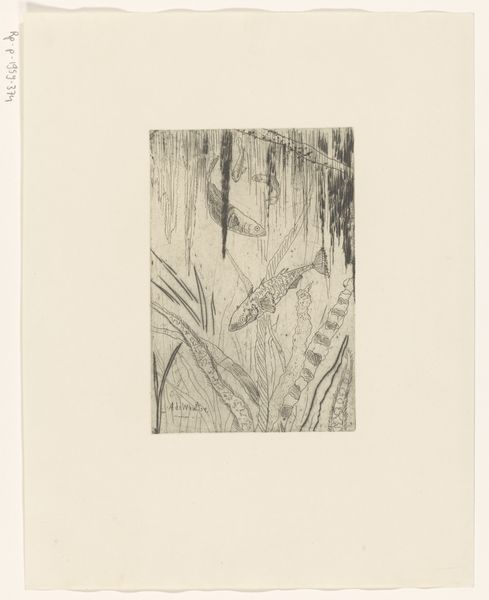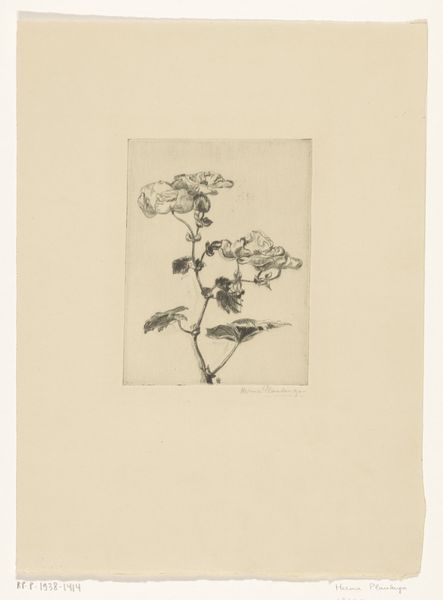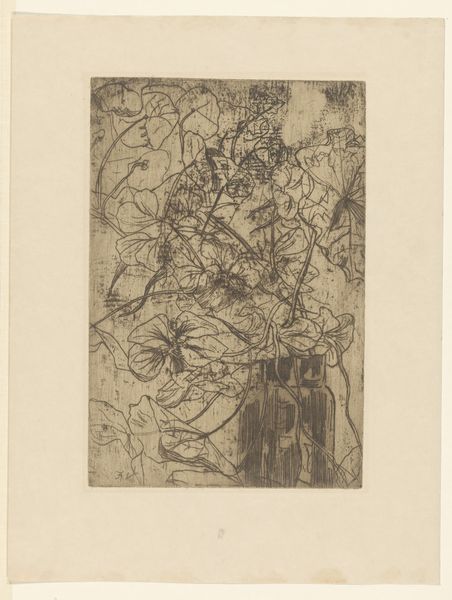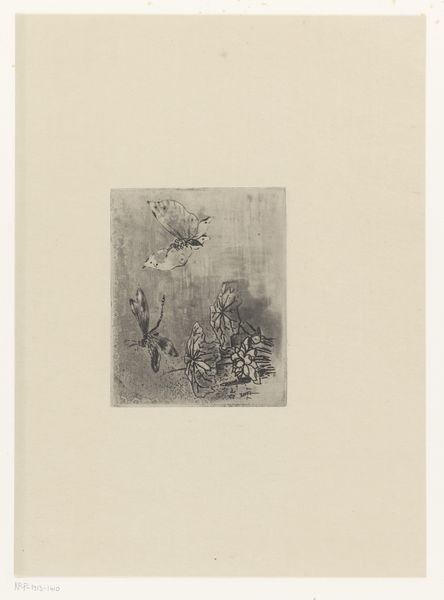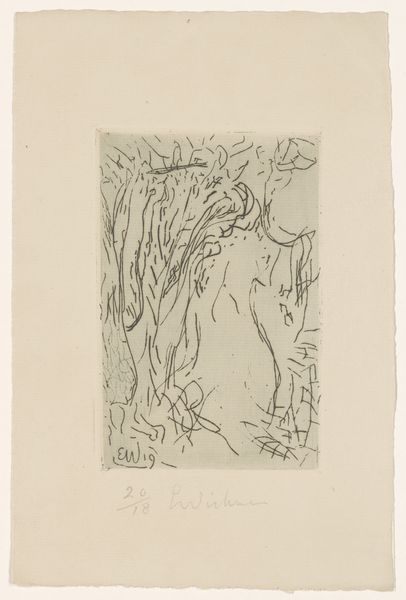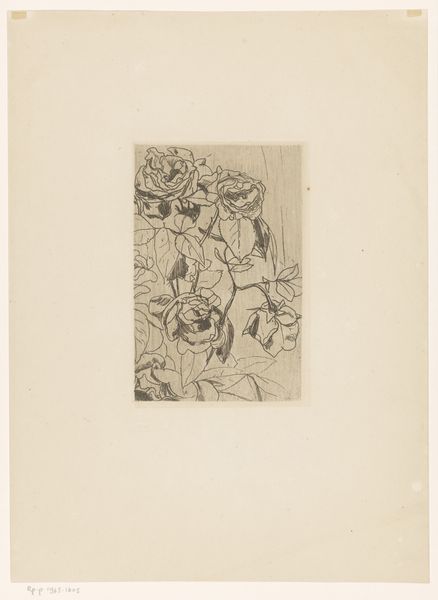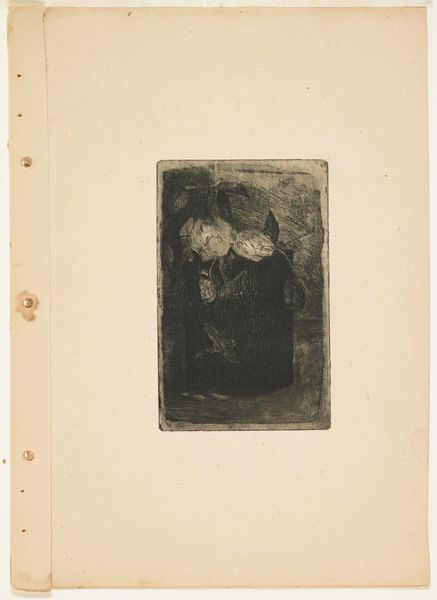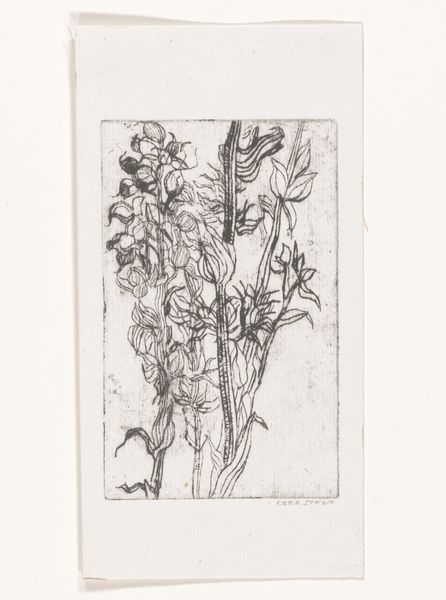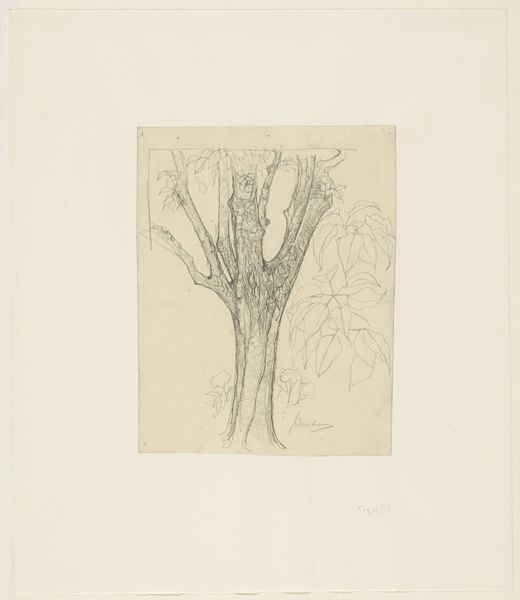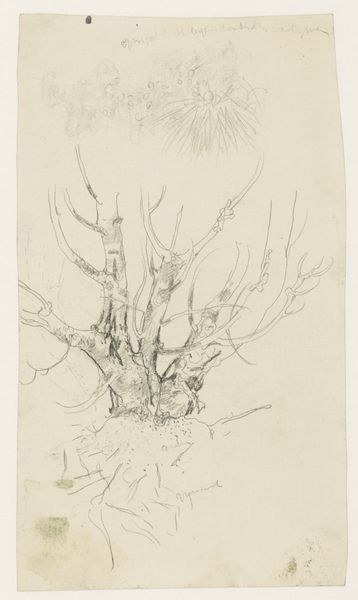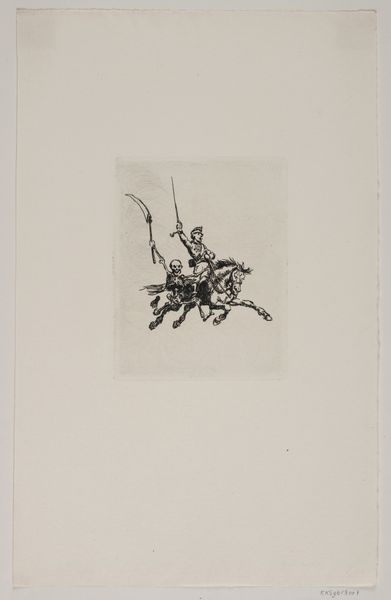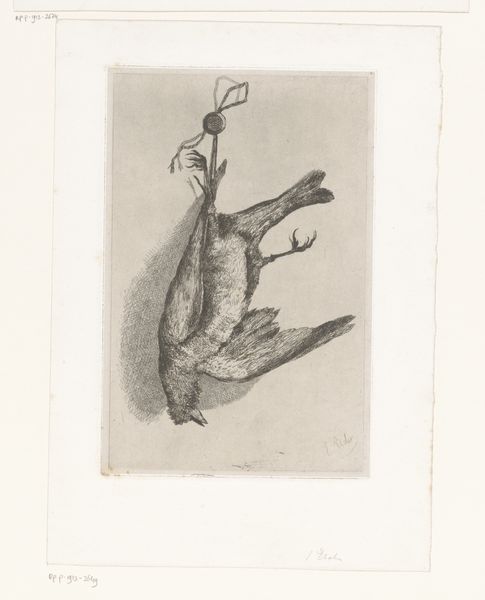
print, etching, ink
# print
#
etching
#
etching
#
ink
#
line
#
realism
Dimensions: height 102 mm, width 61 mm
Copyright: Rijks Museum: Open Domain
Curator: Welcome. Before us hangs "Two Fish in an Aquarium," an etching created with ink on paper by Tinus van Doorn in 1912. It is currently housed in the Rijksmuseum collection. Editor: My first impression is one of quiet melancholy. The lines are so delicate, almost hesitant, creating a sense of fragility. It reminds me of Victorian mourning jewelry. Curator: That's interesting, considering its production as a print. We should think about etching and its multiple implications in this context: both for accessibility to a broader public and its unique production processes in contrast with oil or bronze artworks by this artist. The role of printing democratized art consumption in the early 20th century, creating markets, jobs, and industries surrounding this means of fabrication. Editor: Exactly, it provokes so many important intersections. We see here a microcosm of captivity. The glass, absent yet implied, creates a space where life is observed, constrained. Consider the aquarium itself, often viewed as a domestic object, reflecting a human desire to control and curate nature. The power dynamic present in representing a natural living form caged in human creation... Curator: Yes, but consider the process of its creation and artistic decisions as a manufactured object instead of only portraying what is represented within the artwork; why choose etching? What is its role compared with other printing methods? What market of consumers was van Doorn targeting when designing this artwork? What were the common workshops where this piece was printed? Editor: And this resonates so deeply in a society where environmental consciousness continues to challenge these ingrained behaviors. Think of the concept of spectacle, perhaps influenced by writings by the likes of Guy Debord and others, we continue seeing more of the objectified living rather than simply experiencing it. The lack of depth and the ethereal quality enhance the impression of a liminal existence, suspended between life and… something else. The stark lines, despite their delicacy, speak to a confinement, a deliberate framing of life for passive observation. Curator: That focus on “confinement” overlooks, though, the fact that etching is itself a labor-intensive method, reliant on very particular craftsmanship; therefore, it opens up more interesting perspectives to analyze both the art piece and the means of production in the artist's local economy at the turn of the century. Editor: A point well taken. This is not just an image, it is a multifaceted object: a relic of industrial methods and social practice to dissect from modern cultural standards. Curator: Exactly. Editor: Definitely, perspectives we can use today.
Comments
No comments
Be the first to comment and join the conversation on the ultimate creative platform.
